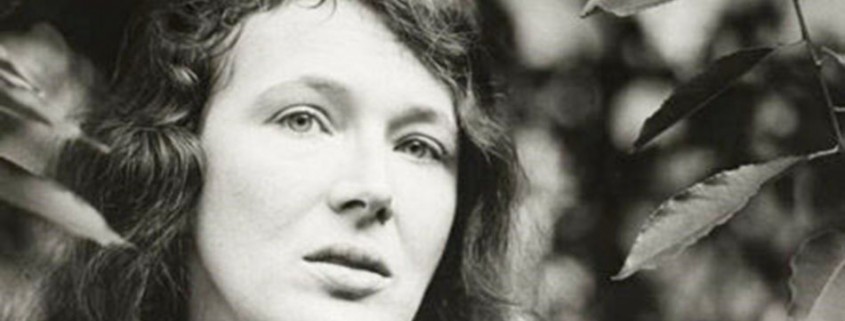Author Angela Carter showcases magical realism in book
My mother has always been a great fan of magical realism. I think part of the unavoidable rebellion of growing up and being a teenager led me to refuse to ever read these bizarre, mystical novels she was constantly telling me about. However, last year, I finally came around and read my first book of the genre: Like Water for Hot Chocolate. I immediately fell head over heels with the gorgeousness of magical realism, with its incredibly rich descriptions of the sensory aspects of the world and fairytale fantasy. I quickly devoured other novels from the genre, all from classic Latin American authors such as Isabel Allende and Gabriel Garcia Marquez. I loved the passion and culture in these novels, and completely understood why the Latin American magical realism is often considered to be the best in the world.
That’s why when I came across Angela Carter, I was hesitant. My best friend had told me that if I loved magical realism, I should try reading something by the renowned English author. I didn’t see how the spirit and heat that worked so well in the Latin American landscape could be as effective in my native country, where the constant rain and bad weather seemed anything but magical. Still, while exploring a bookstore in Norway, I stumbled upon Nights at the Circus by Carter. The description had me hooked, and I thought I might as well give it a try. I’m so pleased that I did, because it ended up being one of the most exquisite, intoxicating and wildly exciting books I have ever read.
The story follows an American journalist, Jack Walser, as he interviews the notorious Sophie Fevvers, the star of a circus act who is about to leave her native London to tour Russia. Fevvers, nicknamed the “Cockney Venus,” has gained the attention of the world because she supposedly has real wings and is able to fly. As Walser becomes unintentionally drawn to this brassy, yet charming woman, he poses as a clown in order to follow her around Russia as part of the circus and reveal once and for all whether she is truly a magical being, or simply a hoax.
The incredible plot is itself astonishing and Carter, truly a master of her craft, manages to bring magic to the slums of London and the depths of Siberia with as much grace and beauty as any Latin American author. What I loved about this book was how different it was from any other type of magical realism I had ever read. Truly, the only fantastical element is Fevvers’ feathered disfigurement, but even the reality of this is constantly questioned and debated throughout the novel. Carter keeps the rest of the story grounded in reality, with Walser’s attempt to keep his grasp on the plausible anchoring the novel. Carter uses the magical elements to discuss more serious topics, specifically the emancipation of women. Women’s rights are hotly debated throughout the novel, and many critics see Fevvers’ ability to fly as a metaphor for her escaping the bonds of patriarchy in turn-of-the-century Europe.
Carter keeps the momentum going, not merely through the physical movement of the circus troupe through London, St. Petersburg and then Siberia, but also through her magnificent language. From the opening of the novel — “‘Lor’ love you, sir!’ Fevvers sang out in a voice that clanged like dustbin lids” — Carter’s characterization is wholly believable and her ability to paint vivid pictures mentally is superb.
Perhaps my only critique of this novel is that it was all too broad. Or, perhaps more accurately, I think that Carter could have added at least a hundred pages and gone into more detail on some of the vast experiences and action that takes place in the novel. Still, the relative shortness of the novel means that there is never a dull moment. From tiger attacks to brothels to the terrible psychological pain of the clowns, Nights at the Circus is a grand, sweeping piece of literature.
For me, this book wasn’t just an enjoyable read, it was also an exploration of what was happening in my hometown of London at the very end of the 19th century. Carter’s vivid descriptions extend to more carnal and everyday things such as food, toilets and hygiene. I found it incredibly interesting how she describes in detail the bacon sandwiches, sardines and tea that Fevvers devours. In some ways this is so similar to what we still eat and drink today, yet, in particular, much greasier, dirtier and, all in all, more disgusting to the modern reader. Of course, this extends to questions of waste and cleanliness as well. I always find it irritating when authors of historical fiction ignore so much of the day-to-day aspects of life that mark the time period as so different from ours, but Carter made me feel like I was standing in 19th century London, fully aware of all the sights, smells, sounds, tastes and textures.
Nights at the Circus manages to both be one of the most magical books I have ever read and also one of the most realistic. Carter’s blending of the fantastical and the almost gratingly vivid conditions of everyday life are both conflicting and yet somehow wonderfully complementary. This was something I had never encountered before in magical realism and is what makes this book so worth reading.
Kirsten Greenwood is a sophomore majoring in English. Her column, “By the Book,” runs every Friday.

